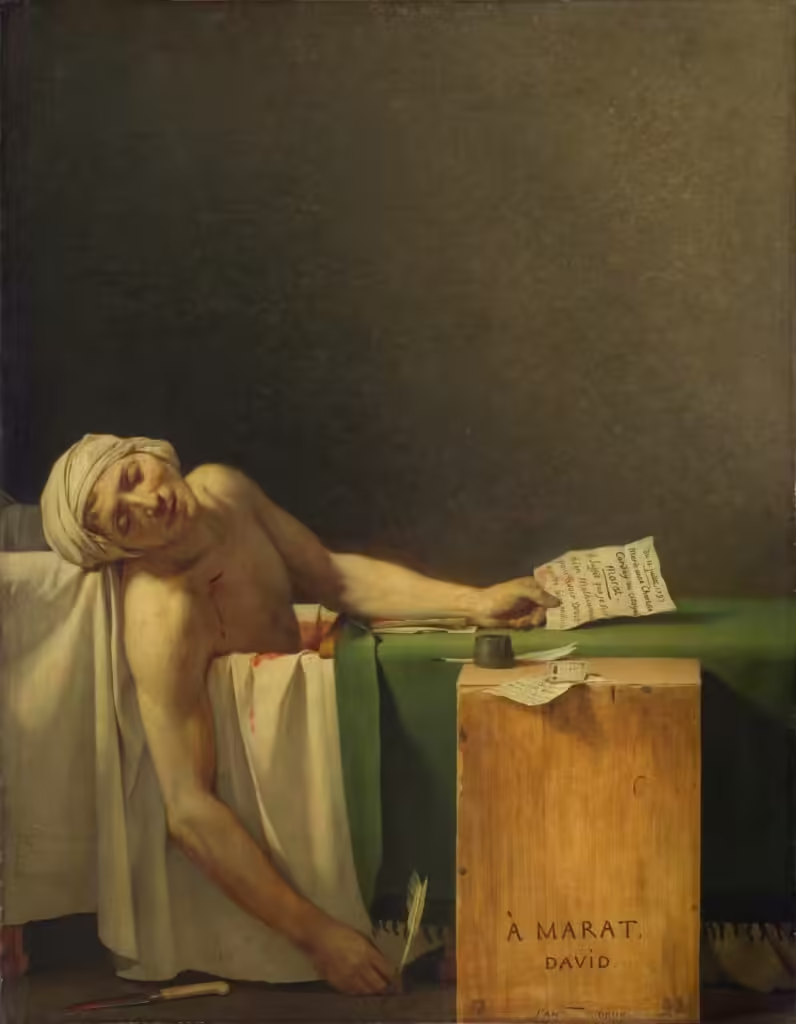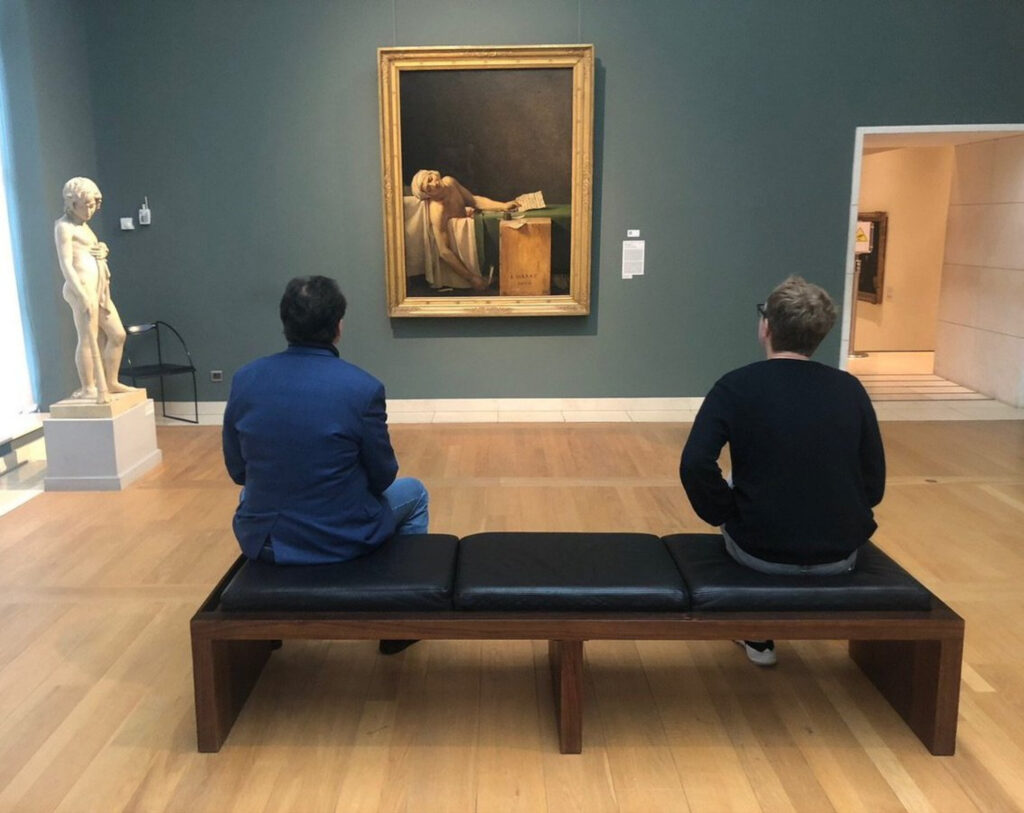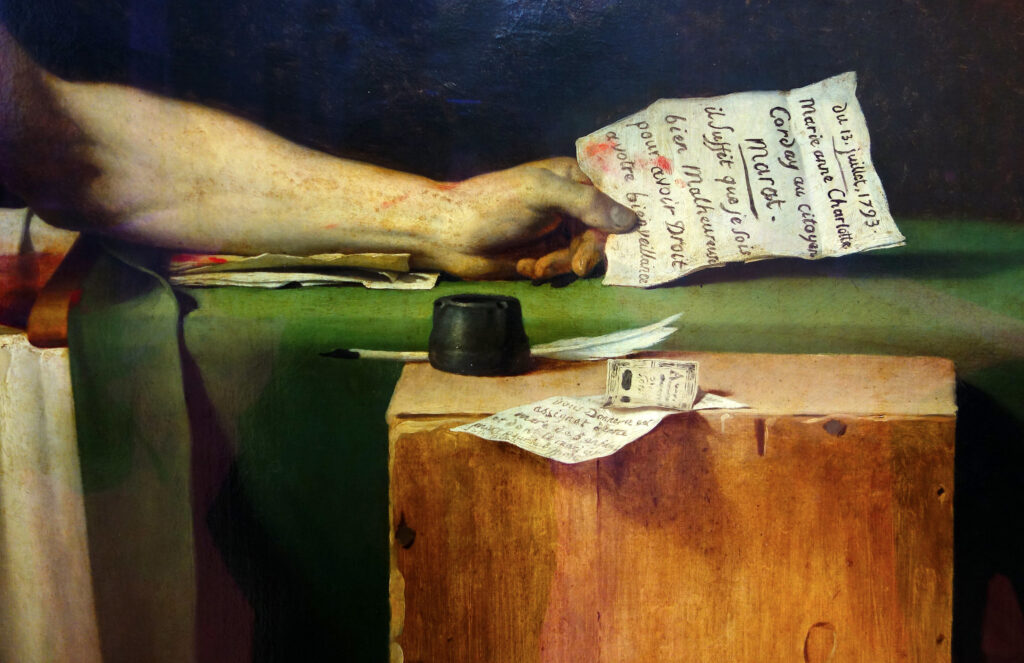Jacques-Louis David Blog, The Artemis Blog
Analysis of The Death of Marat by Jacques-Louis David
Analysis of The Death of Marat
Today, we’re exploring Jacques-Louis David’s iconic painting, The Death of Marat from 1793. This haunting image captures the moment of murder during the tumultuous French Revolution, reflecting both the personal and political turmoil of the time.

Jacques-Louis David: Artist and Revolutionary
Jacques-Louis David was a prominent painter whose work transitioned from the ornate Rococo style to the more austere neoclassical movement. His early success as a portrait painter was overshadowed by his dedication to neoclassicism, inspired by Roman ideals and the renewed interest in ancient Rome due to discoveries in Pompeii.
With the onset of the French Revolution in 1789, David chose to remain in France and became actively involved in the political upheaval. Aligning himself with the radical Montagnards and befriending influential figures like Maximilien Robespierre and Jean-Paul Marat, David immersed himself in the revolutionary fervor.

The Revolutionary Context
The year 1793 was marked by escalating violence and political strife. The execution of Louis XVI in January set the stage for an even more radical phase of the revolution. The Girondins, a moderate faction, were gradually overshadowed by the more radical Montagnards, leading to the infamous Reign of Terror. Marat, a key figure in the Montagnard faction, was a staunch advocate for radical measures, including the September Massacres and the execution of perceived enemies.

The Murder of Marat
Jean-Paul Marat, a physician and revolutionary journalist, was a vocal supporter of radical measures. His newspaper, L’Ami du Peuple, championed the revolution’s cause and called for action against its enemies. On July 13, 1793, Marat was murdered by Charlotte Corday, a Girondin sympathizer, while working from his bathtub—a setting he used due to a debilitating skin disease.
Corday visited Marat under the pretense of delivering a petition but used the opportunity to stab him. The murder was swift, and Marat’s death was a significant blow to the revolution’s radical faction. Corday was quickly arrested and executed, but her actions became a focal point in revolutionary propaganda.

David’s Masterpiece
David’s response to Marat’s death was swift and profound. He created The Death of Marat, capturing the scene in a manner that transformed Marat into a martyr of the revolution. Although David was not present at the murder, he used the police report and his personal knowledge to create a painting that has been described as both a powerful political statement and a modernist work of art.
In the painting, Marat is depicted with serene dignity, his death framed as a heroic sacrifice. David removed much of the clutter from the scene to emphasize the drama, portraying Marat as a classical figure with clean lines and minimal blood, contrasting sharply with the actual chaos and disorder of his death.

Legacy and Reflection
David’s painting was initially presented to the National Convention, rather than the traditional Salon, making it a direct tribute to Marat and a piece of revolutionary propaganda. The painting’s stark portrayal and its role in shaping Marat’s legacy reflect how art can transform political and historical events into enduring symbols.
Another painting of this event by Paul-Jacques Aimé Baudry, created 57 years later, presents a different perspective, focusing on Charlotte Corday as the tragic heroine. This contrast highlights the enduring power of David’s original depiction and its impact on how history is remembered.
David’s The Death of Marat remains a powerful testament to the intersection of art and politics, capturing both the personal tragedy of Marat’s death and the broader upheaval of the French Revolution. The painting is now housed in the Museum of Fine Arts in Brussels, a reminder of its historical significance and artistic impact.

